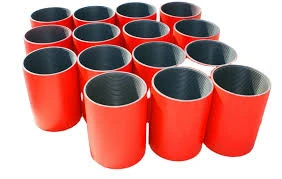- Afrikaans
- Albanian
- Amharic
- Arabic
- Armenian
- Azerbaijani
- Basque
- Belarusian
- Bengali
- Bosnian
- Bulgarian
- Catalan
- Cebuano
- Corsican
- Croatian
- Czech
- Danish
- Dutch
- English
- Esperanto
- Estonian
- Finnish
- French
- Frisian
- Galician
- Georgian
- German
- Greek
- Gujarati
- Haitian Creole
- hausa
- hawaiian
- Hebrew
- Hindi
- Miao
- Hungarian
- Icelandic
- igbo
- Indonesian
- irish
- Italian
- Japanese
- Javanese
- Kannada
- kazakh
- Khmer
- Rwandese
- Korean
- Kurdish
- Kyrgyz
- Lao
- Latin
- Latvian
- Lithuanian
- Luxembourgish
- Macedonian
- Malgashi
- Malay
- Malayalam
- Maltese
- Maori
- Marathi
- Mongolian
- Myanmar
- Nepali
- Norwegian
- Norwegian
- Occitan
- Pashto
- Persian
- Polish
- Portuguese
- Punjabi
- Romanian
- Russian
- Samoan
- Scottish Gaelic
- Serbian
- Sesotho
- Shona
- Sindhi
- Sinhala
- Slovak
- Slovenian
- Somali
- Spanish
- Sundanese
- Swahili
- Swedish
- Tagalog
- Tajik
- Tamil
- Tatar
- Telugu
- Thai
- Turkish
- Turkmen
- Ukrainian
- Urdu
- Uighur
- Uzbek
- Vietnamese
- Welsh
- Bantu
- Yiddish
- Yoruba
- Zulu
6 Inch Well Casing Coupling Specifications and Installation Guidelines for Optimal Performance
Understanding the 6-Inch Well Casing Coupling Design, Function, and Applications
In many modern drilling and water extraction operations, the integrity of the well casing is crucial. A key component of this system is the well casing coupling. This article focuses on the 6-inch well casing coupling, a significant part of the water well construction and oil drilling sectors.
What Is a Well Casing Coupling?
A well casing coupling serves as a mechanical connector that links two sections of well casing together. The casing itself is a pipe placed in the borehole after drilling to stabilize the well, prevent contamination, and support the surrounding soil. Couplings, typically made from high-strength steel or other durable materials, ensure that these sections remain securely connected under various environmental conditions and pressures.
Importance of 6-Inch Size
The 6-inch diameter for well casing is a prevalent choice in many applications, particularly in residential water wells and monitoring wells for groundwater studies. This size strikes a balance between being robust enough to withstand the challenges of drilling and not being overly large, which would require more extensive materials and costs.
Design Features
1. Material Strength Most 6-inch well casing couplings are constructed from steel, designed to resist corrosion and physical stress. Depending on the specific requirements of the well—like depth and external conditions—casing couplings can also be available in galvanized or PVC materials.
2. Threading A common design feature of these couplings is the threaded ends that allow for easy connection with other casing sections. The threads ensure a tight, secure fit that minimizes the risk of leaks and provides structural integrity.
3. Pressure Ratings Depending on the application, 6-inch casing couplings may come with various pressure ratings. These ratings are an essential aspect, determining the coupling's strength to withstand the internal pressures of water extraction or the external forces from the surrounding earth.
Installation Considerations
6 inch well casing coupling

Proper installation of the 6-inch well casing coupling is critical to achieving a functional and durable well. Here are some important considerations
- Alignment Correctly aligning the sections of casing is vital. Misalignment can cause stress concentrations that may lead to premature failure. - Torque Specification When tightening the couplings, following the manufacturer's torque specifications ensures that the connection is neither over- nor under-tightened.
- Sealing While couplings generally create a leak-proof seal, additional measures like pipe dope or thread sealants may be used for extra security, particularly in high-pressure or challenging environments.
Applications
6-inch well casing couplings are widely used in a variety of fields
1. Water Wells The most common application is in residential and agricultural water wells, where they are used to extract groundwater for domestic, irrigation, and livestock use.
2. Environmental Monitoring These casings provide access points for groundwater sampling and monitoring of groundwater quality, helping to ensure safe and clean water supplies.
3. Oil and Gas Exploration In the energy sector, 6-inch casings are sometimes utilized in drilling operations, specifically in areas where large boreholes are required to reach reserve levels.
Conclusion
The 6-inch well casing coupling is an essential component in various applications that involve underground operations. Its design, strength, and compatibility with other casing sections play a critical role in ensuring the overall integrity of a well. Whether extracting water, monitoring environmental conditions, or exploring for oil and gas, understanding the importance of high-quality couplings cannot be overstated. Efficient installation and proper maintenance of these couplings can prolong the lifespan of wells and ensure efficient performance, ultimately contributing to successful operational outcomes in multiple industries. As technology continues to advance, innovations in well casing design and materials will further enhance the robustness and reliability of well systems around the world.
-
Tubing Pup Joints: Essential Components for Oil and Gas OperationsNewsJul.10,2025
-
Pup Joints: Essential Components for Reliable Drilling OperationsNewsJul.10,2025
-
Pipe Couplings: Connecting Your World EfficientlyNewsJul.10,2025
-
Mastering Oilfield Operations with Quality Tubing and CasingNewsJul.10,2025
-
High-Quality Casing Couplings for Every NeedNewsJul.10,2025
-
Boost Your Drilling Efficiency with Premium Crossover Tools & Seating NipplesNewsJul.10,2025







